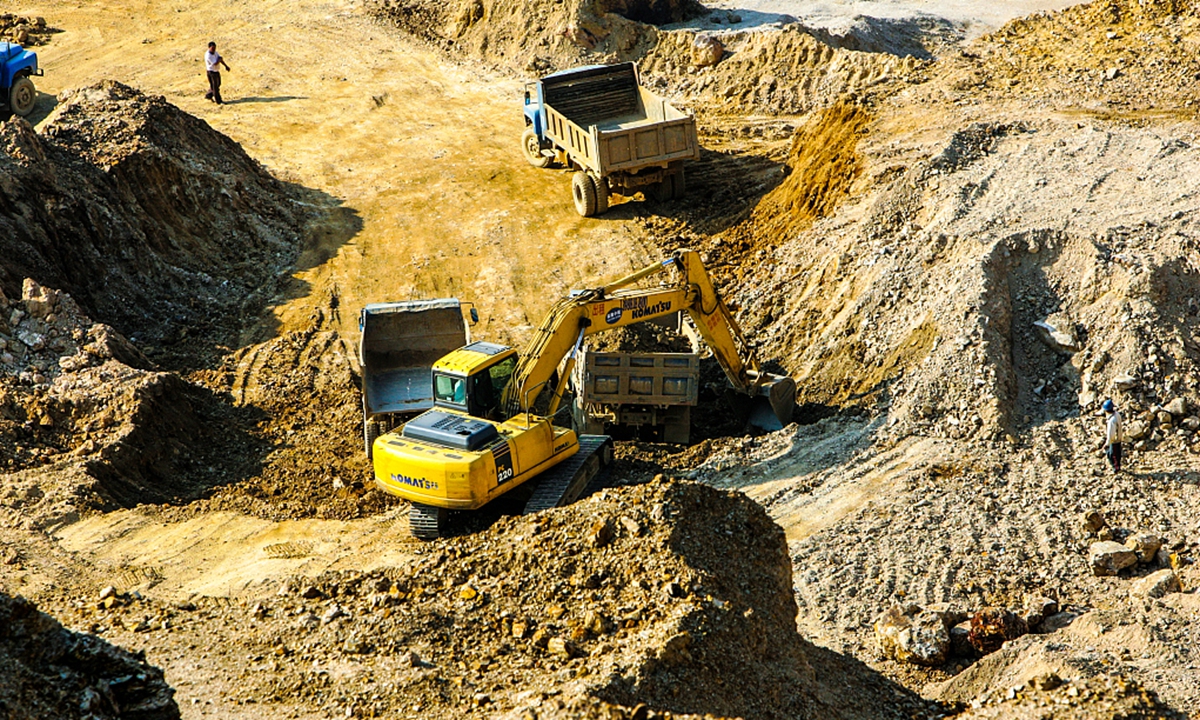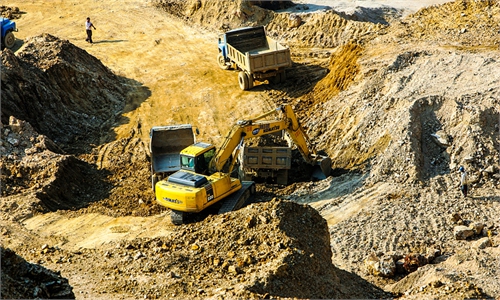
rare earth Photo:VCG
Rare-earth prices have hit the highest point in a decade, with the Chinese rare-earth price index reaching 425.9 as of Wednesday. Although that was down 0.9 points from Tuesday, it's still at a high level, according to the China Rare Earth Industry Association.
Domestic rare earths are no longer cheap, and they're at their true value, experts said. High prices also reflect booming demand from downstream industries including new-energy vehicles (NEVs) and wind power.
Rare-earth stocks gained on Wednesday, with some large companies such as Zhejiang Innuovo Magnetics up 8.38 percent and China Minmetals Rare Earth rising 5.44 percent.
Industry analysts predicted that prices will stay elevated for some time, given tight supplies and strong demand, ignited by the economic rebound and policy stimulus after the Chinese New Year.
Prices have risen due to a supply-demand imbalance. Upstream raw materials and recycled waste are both in short supply, mainly due to factors such as environmental protection requirements and policy control of strategic resources, Yang Wenhua, an industry analyst with news portal Shanghai Metals Market, told the Global Times on Wednesday.
Output isn't expanding enough to match downstream demand, which rises year by year, Yang said.
During the Spring Festival, most enterprises were producing normally, but it's been difficult for them to increase output quickly. During the Beijing Winter Olympics, some enterprises operated below capacity or even stopped production, analysts with Northeast Securities said.
Price jumps also reflect boom conditions in sectors such as NEVs. Analysts are generally optimistic about the NEV market in 2022, given strong government policy support and the country's move toward industry upgrades and green development.
According to Lightspeed China, the market penetration rate of NEVs in China is expected to increase from nearly 15 percent in 2021 to more than 20 percent in 2022.
Subsidies for NEVs are another big plus. In 2022, the government will eliminate the ceiling of 2 million NEVs for the whole year, Cui Dongshu, secretary general of the China Passenger Car Association, said.
Reduced imports are also supporting prices. Myanmar is an important source of these minerals in China, accounting for about 10 percent. Although the China-Myanmar customs closure policy was loosened at the end of 2021, it will take time to stabilize output, and supplies will remain tight, according to China International Capital Corp.
If prices continue rising, analysts expect more efforts to ease the pressure. Higher prices could put pressure on the sustainable development of downstream industries, a senior industry insider told the Global Times on Wednesday on condition of anonymity.
The Ministry of Industry and Information Technology and the Ministry of Natural Resources issued a joint notice on January 28, saying that the initial batch of mining quotas this year will be 100,800 tons, and the smelting and separation quota will be 97,200 tons, compared with 84,000 tons and 81,000 tons in 2021.
In December, China formed the China Rare Earth Group Co, an industry conglomerate, by merging several key producers. The goal of the merger was to realize the complementary advantages of rare-earth resources, as well as the coordinated development of the sector and its downstream industries
Experts said that as rare-earth companies expand their production capacity, supplies will increase and the situation will gradually ease.
China's exports of rare earths are still at a high level. "With the production capacity expansion of some companies, we expect that the export volume of some rare earths could also increase," Yang said.

